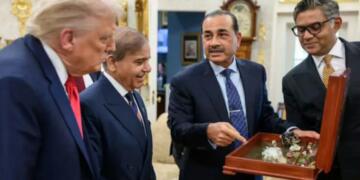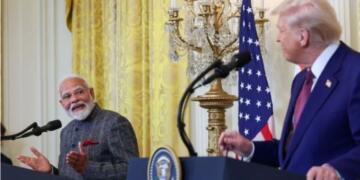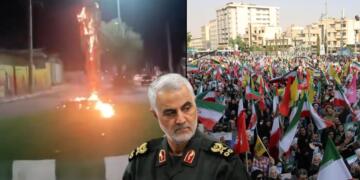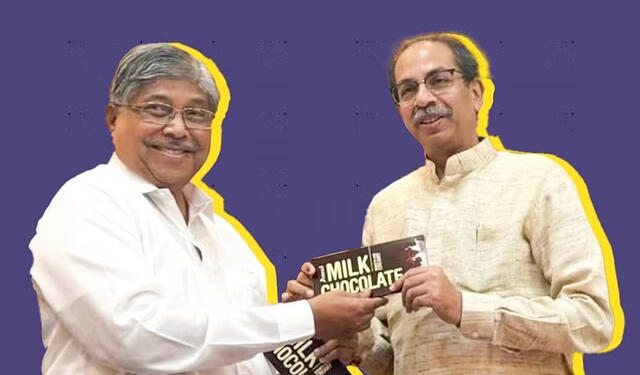In recent political developments within Maharashtra, the coalition of opposition parties known as Maha Vikas Aghadi (MVA) has achieved a notable feat by significantly reducing the Lok Sabha seat share of the ruling National Democratic Alliance (NDA), also known as Mahayuti, from 43 seats in 2019 to 17 seats in 2024. This substantial shift has brought to the forefront the intricate dynamics within the political landscape of the state, especially as the eagerly awaited state assembly elections loom just three months ahead.
Patil’s Strategic Gestures: Bridging Political Divides
Central to the current political discourse are the gestures made by Chandrakant Patil, the State Legislative Affairs Minister of Maharashtra, towards Uddhav Thackeray, the influential leader of Shiv Sena (UBT). Patil’s recent visit to the Shiv Sena’s chamber during the ongoing assembly session has sparked considerable speculation and commentary in regional media circles. His friendly exchanges with Thackeray and other prominent Shiv Sena leaders, accompanied by the exchange of chocolates and pleasantries, have been interpreted as potential overtures aimed at thawing the frosty relations between the Bharatiya Janata Party (BJP) and Shiv Sena (UBT).
Historical Context: Alliance, Disagreements, and Realignment
The historical narrative between BJP and Shiv Sena (UBT) traces back to their earlier alliance, which was severed following the 2019 elections. Initially political allies, the relationship soured over disputes, particularly stemming from the denial of the Chief Ministerial post to Uddhav Thackeray’s party. This rupture prompted Shiv Sena to forge new alliances with Congress and NCP, forming the present MVA coalition. The recent interactions between senior BJP leaders like Devendra Fadnavis and Uddhav Thackeray during chance encounters at the state legislature have reignited discussions about the feasibility and potential advantages of rekindling their former alliance.
Recent Controversies and Legislative Dynamics
The recent exchanges and controversies within the legislative council have further underscored the delicate nature of political alignments in Maharashtra. A notable incident involved BJP MLC Prasad Lad and Uddhav Sena’s Danve, which escalated into a heated verbal exchange, leading to a resolution for Danve’s suspension. The resolution underwent subsequent amendment, reflecting how political alliances recalibrate strategically as the electoral landscape evolves.
Strategic Calculations within BJP: Balancing Unity and Strategic Alliances
Internally, the BJP in Maharashtra finds itself at a crossroads, grappling with divergent views on the potential reconciliation with Uddhav Thackeray’s Shiv Sena. Some voices within the party advocate for reconciliation, viewing it as a strategic move to consolidate electoral prospects in the upcoming elections. They argue that a united front could potentially leverage the combined strengths of both parties, resonating better with the electorate. Conversely, others within the BJP leadership recall the challenges and assertiveness displayed by Shiv Sena during their previous alliance, cautioning against hasty decisions that could jeopardize the party’s autonomy and electoral strategy.
Future Prospects and Electoral Implications
As Maharashtra prepares for the pivotal state assembly elections, the political landscape remains fluid and unpredictable. The strategic interactions and public statements made by key leaders from both MVA and Mahayuti alliances will continue to shape the discourse leading up to the polls. The evolving dynamics underscore the complexities of coalition politics in Maharashtra, where historical alliances and recent divisions intersect with electoral ambitions and regional dynamics.
Conclusion: Navigating Uncertainties in Maharashtra’s Political Arena
In conclusion, Maharashtra’s political arena presents a dynamic tableau characterized by strategic recalibrations, historical alliances, and evolving electoral dynamics. The ongoing interactions between BJP and Shiv Sena (UBT), as well as their respective maneuvers within the broader political spectrum, highlight the intricacies of coalition governance and electoral strategy. As the countdown to the state assembly elections commences, all eyes remain on how these developments will influence voter sentiment and shape the future course of Maharashtra’s political landscape.
ALSO READ: Chandrababu Naidu had a meeting with Modi for ………..?































